Women's Safety Clothing Canada: Enhanced Protection & Style
Understanding the Criticality of Women's Safety Clothing in Canada
In diverse industrial sectors across Canada, the demand for specialized Personal Protective Equipment (PPE) tailored for female workers is rapidly expanding. This encompasses a wide range of gear, but a particularly critical segment is women's safety clothing canada. Historically, PPE design has largely been based on male anthropometry, leading to ill-fitting, uncomfortable, and potentially unsafe gear for women. Modern safety clothing addresses these disparities by offering designs that accommodate female body shapes, ensuring optimal protection, mobility, and comfort. This article delves into the technical aspects, industry trends, and strategic importance of high-performance safety apparel for women in Canadian workplaces.
The drive for purpose-built women's safety clothing canada is not merely a matter of comfort; it is a fundamental safety imperative. Poorly fitting garments can snag on machinery, impede movement, reduce visibility, and compromise the efficacy of protective features, thereby increasing the risk of workplace injuries. As more women enter traditionally male-dominated fields such as construction, mining, utilities, and emergency services, the industry's focus has shifted towards providing gender-specific solutions that comply with rigorous Canadian safety standards like CSA Z96 for high-visibility apparel.

Industry Trends in Women's Safety Clothing
The market for women's safety clothing canada is experiencing significant growth, driven by several key trends:
- Ergonomic Design & Fit: A primary trend is the emphasis on tailored sizing and ergonomic designs that accommodate female body proportions, ensuring maximum mobility and reducing bulk. This includes features like adjustable waistbands, shorter torso lengths, and varied inseams.
- Advanced Material Science: Integration of lightweight, breathable, and highly durable fabrics that offer enhanced protection without compromising comfort. This includes moisture-wicking properties, flame-resistant (FR) textiles, and specialized materials for chemical resistance.
- Multi-Hazard Protection: A shift towards multi-functional garments that provide protection against various hazards simultaneously, such as high-visibility, flame resistance, arc flash protection, and protection from adverse weather conditions.
- Sustainability: Growing demand for eco-friendly manufacturing processes and materials, including recycled content and ethical sourcing, aligning with corporate social responsibility initiatives.
- Smart PPE Integration: Emerging innovations include smart textiles with integrated sensors for vital sign monitoring, fall detection, or environmental hazard detection, enhancing real-time safety.
These trends are not isolated to Canada; they reflect a global movement towards more inclusive and effective safety solutions, with related developments seen in women's safety clothing for sale online and even in specific markets like womens safety clothing nz.

Manufacturing Process Flow for Women's Safety Clothing
The production of specialized women's safety clothing canada involves a meticulous process, from material selection to rigorous testing, ensuring adherence to high safety standards.
Schematic Steps of Manufacturing:
- 1. Design & Pattern Development: Based on detailed anthropometric data for women, patterns are created for various garment types (e.g., coveralls, jackets, pants) to ensure ergonomic fit and full range of motion. CAD software is extensively used for precision.
- 2. Material Sourcing & Inspection:
- Materials: High-performance fabrics such as treated cotton (FR), Nomex®, Kevlar®, Gore-Tex®, and various blends are selected based on the required protection level (e.g., flame resistance, water resistance, chemical splash). Reflective tapes conforming to CSA Z96 standards are also sourced.
- Inspection: Incoming materials undergo stringent quality checks for tensile strength, tear resistance, colorfastness, FR properties, and absence of defects.
- 3. Cutting: Automated CNC cutting machines precisely cut fabric layers according to the developed patterns, minimizing material waste and ensuring accuracy.
- 4. Sewing & Assembly: Skilled technicians assemble the cut pieces using specialized sewing techniques, often involving double-stitched or reinforced seams for durability. Features like pockets, zippers, and reflective strips are integrated. The use of robust threads (e.g., aramid fibers for FR garments) is critical.
- 5. Specialized Treatments (if applicable): Depending on specifications, garments may undergo additional treatments like water-repellent coatings or enhanced chemical resistance applications.
- 6. Quality Control & Testing:
- Testing Standards: Garments are tested against relevant international and national standards, including ISO (e.g., ISO 11612 for FR, ISO 20471 for High-Visibility), ANSI/ISEA 107 (US equivalent to CSA Z96), and specific CSA standards for Canadian applications.
- Checks: Visual inspections, seam strength tests, reflective performance checks, and dimensional accuracy are performed.
- 7. Labeling & Packaging: Each garment is labeled with care instructions, size, material composition, and compliance certifications. Products are then packaged for distribution.
Target Industries & Service Life:
Women's safety clothing canada is vital across a multitude of industries where female workers face specific hazards:
- Petrochemical: Flame-resistant (FR) and arc flash protective clothing.
- Metallurgy: Heat-resistant and molten splash protective gear.
- Construction & Utilities: High-visibility, weather-resistant, and cut-resistant apparel. This is where workplace safety clothing sales are particularly strong.
- Mining: Durable, high-visibility, and often anti-static clothing.
- Water Supply & Drainage: Waterproof and chemical-resistant attire.
- Forestry (e.g., Wright Tree Service safety clothing requirements): Puncture-resistant, high-visibility, and weather-proof solutions.
The typical service life of safety clothing varies significantly based on material, usage intensity, maintenance, and exposure to harsh environments. High-quality workwear safety clothing factories aim for a service life of 1 to 3 years for daily use garments, with specialized FR or chemical-resistant suits potentially requiring more frequent replacement or specific inspection protocols.
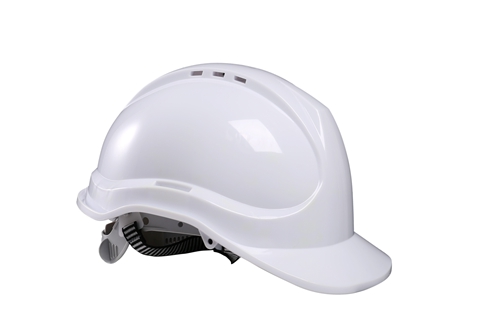
Technical Specifications and Parameters
Selecting the appropriate women's safety clothing canada requires a detailed understanding of its technical specifications. These parameters dictate the garment's protective capabilities and suitability for specific hazards.
Key Product Specifications for High-Visibility FR Coveralls:
| Parameter | Specification | Standard Compliance |
|---|---|---|
| Material Composition | 88% Cotton, 12% Nylon Blend (FR treated) | NFPA 2112, CSA Z462, ASTM F1506 |
| Fabric Weight | 7 oz/yd² (237 gsm) | N/A (Industry Best Practice) |
| Arc Thermal Performance Value (ATPV) | 8.5 cal/cm² (HRC 2) | ASTM F1959 |
| High-Visibility Class | CSA Z96-15 Class 3 Level 2 (Orange/Lime-Yellow) | CSA Z96-15 |
| Moisture Management | Moisture-wicking, Quick-drying | ASTM D6605 |
| Durability & Abrasion Resistance | >20,000 cycles (Martindale test) | ISO 12947-2 |
| Fit & Ergonomics | Female-specific sizing, articulated knees, adjustable cuffs | Ergonomic design principles |

Application Scenarios and Technical Advantages
The technical advantages of well-engineered women's safety clothing canada manifest across various challenging work environments, directly contributing to enhanced worker safety and productivity.
Typical Application Scenarios:
- Electrical Utilities: Lineworkers and technicians require arc-flash rated outerwear and undergarments. The precision fit for women ensures layers are not bulky, reducing heat stress and improving dexterity, which is crucial when handling live wires. This is a common application for the kind of XPS safety clothing often sought in the sector.
- Road & Highway Construction: High-visibility rain gear and insulated jackets for traffic control and road crews. Optimized female sizing prevents garments from impeding movement, a common issue with unisex designs, allowing for quick reactions in dynamic environments.
- Oil & Gas Refineries: Workers in these sites require FR coveralls and specialized chemical splash protection. Garments designed for women offer better seal against chemicals and prevent baggy clothing from snagging on equipment, enhancing safety in volatile areas.
- Forestry & Arboriculture (e.g., Wright Tree Service safety clothing): Chainsaw protective pants and jackets, often reinforced with cut-resistant materials, are essential. Female-specific sizing improves comfort for long shifts and ensures protective padding stays correctly positioned.
- Mining & Tunneling: Durable, tear-resistant coveralls with reflective strips for low-light conditions. Ergonomic designs facilitate climbing and confined space work, common in these industries.
Demonstrated Technical Advantages:
- Optimized Protection: A correct fit ensures protective elements (e.g., FR fabrics, reflective stripes) are positioned correctly and function as intended, maximizing the garment's protective capabilities against specific hazards. This prevents the compromise of safety features often seen with oversized unisex PPE.
- Enhanced Mobility & Dexterity: Anatomically designed garments reduce bulk and restriction, allowing for full range of motion. This is critical for tasks requiring precision, climbing, or operating heavy machinery, directly contributing to accident prevention.
- Improved Comfort & Reduced Fatigue: Lightweight, breathable, and well-fitting clothing minimizes heat stress, chafing, and general discomfort, especially during long shifts. This translates to reduced fatigue and improved concentration, key factors in safety.
- Durability & Longevity: High-quality materials and reinforced construction, common in specialized women's safety clothing canada, withstand the rigors of industrial use, leading to a longer service life and better return on investment.
- Regulatory Compliance: Adherence to Canadian standards like CSA Z96 for high-visibility and NFPA 2112 for FR, ensured by proper fit, mitigates legal and liability risks for employers. Companies showing WW concern for safety clothing often prioritize these standards.
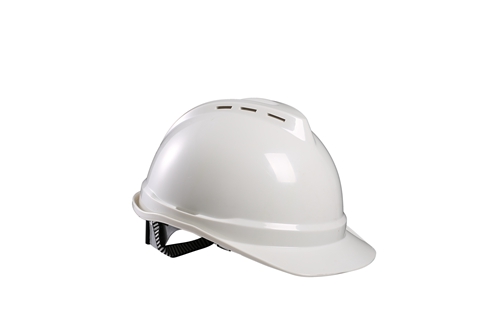 Typical Application Scenarios:
Typical Application Scenarios:
- Electrical Utilities: Lineworkers and technicians require arc-flash rated outerwear and undergarments. The precision fit for women ensures layers are not bulky, reducing heat stress and improving dexterity, which is crucial when handling live wires. This is a common application for the kind of XPS safety clothing often sought in the sector.
- Road & Highway Construction: High-visibility rain gear and insulated jackets for traffic control and road crews. Optimized female sizing prevents garments from impeding movement, a common issue with unisex designs, allowing for quick reactions in dynamic environments.
- Oil & Gas Refineries: Workers in these sites require FR coveralls and specialized chemical splash protection. Garments designed for women offer better seal against chemicals and prevent baggy clothing from snagging on equipment, enhancing safety in volatile areas.
- Forestry & Arboriculture (e.g., Wright Tree Service safety clothing): Chainsaw protective pants and jackets, often reinforced with cut-resistant materials, are essential. Female-specific sizing improves comfort for long shifts and ensures protective padding stays correctly positioned.
- Mining & Tunneling: Durable, tear-resistant coveralls with reflective strips for low-light conditions. Ergonomic designs facilitate climbing and confined space work, common in these industries.
Demonstrated Technical Advantages:
- Optimized Protection: A correct fit ensures protective elements (e.g., FR fabrics, reflective stripes) are positioned correctly and function as intended, maximizing the garment's protective capabilities against specific hazards. This prevents the compromise of safety features often seen with oversized unisex PPE.
- Enhanced Mobility & Dexterity: Anatomically designed garments reduce bulk and restriction, allowing for full range of motion. This is critical for tasks requiring precision, climbing, or operating heavy machinery, directly contributing to accident prevention.
- Improved Comfort & Reduced Fatigue: Lightweight, breathable, and well-fitting clothing minimizes heat stress, chafing, and general discomfort, especially during long shifts. This translates to reduced fatigue and improved concentration, key factors in safety.
- Durability & Longevity: High-quality materials and reinforced construction, common in specialized women's safety clothing canada, withstand the rigors of industrial use, leading to a longer service life and better return on investment.
- Regulatory Compliance: Adherence to Canadian standards like CSA Z96 for high-visibility and NFPA 2112 for FR, ensured by proper fit, mitigates legal and liability risks for employers. Companies showing WW concern for safety clothing often prioritize these standards.

Vendor Comparison for Women's Safety Clothing
When sourcing women's safety clothing canada, decision-makers must evaluate vendors based on a comprehensive set of criteria that go beyond mere price. The quality, compliance, and customization capabilities are paramount.
Comparison Criteria for Suppliers:
| Criterion | Leading Manufacturer | Standard Supplier | Budget Option |
|---|---|---|---|
| Product Range (Female Specific) | Extensive, multi-category (FR, HV, Arc, Weather) | Moderate, some female-specific options | Limited, mostly unisex with small sizes |
| Certifications & Compliance | CSA Z96, NFPA, ASTM, ISO certified (documented) | Meets basic CSA/ANSI; less specialized certs | May meet minimums; unverified claims |
| Material Quality & Durability | Premium, long-lasting technical fabrics | Standard industrial fabrics, acceptable life | Basic fabrics, limited durability |
| Customization Capabilities | Full ODM/OEM, logo, bespoke sizing, fabric choice | Logo placement, basic color changes | Standard products only, no customization |
| After-Sales Support & Warranty | Comprehensive, extended warranty, technical support | Standard warranty, basic support | Limited or no warranty/support |
| Lead Time (Average) | 4-8 weeks (for custom/large orders) | 6-12 weeks | 8-16 weeks (often from overseas workwear safety clothing factories) |
When considering vendors, especially those offering a broad range from general WW safety clothing to specialized solutions, it's crucial to assess their track record, commitment to R&D, and ability to deliver consistently compliant products. Many industrial procurement teams often look for suppliers with a history of partnership with major Canadian firms and adherence to international quality management systems like ISO 9001. Reputable suppliers like those manufacturing Yakka safety clothing in Australia often set a benchmark for quality that Canadian buyers look for.
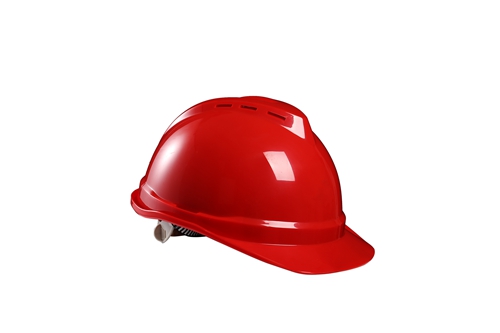
Customized Solutions for Women's Safety Clothing
Standardized PPE often falls short in specialized applications or for organizations with unique brand and safety requirements. Customization offers a tailored approach to women's safety clothing canada, ensuring maximum efficacy and organizational alignment.
- Tailored Sizing and Fit Adjustments: Beyond standard sizes, some manufacturers offer semi-custom or fully bespoke sizing based on employee measurements, addressing unique body shapes and ensuring optimal protective coverage and comfort.
- Specific Hazard Protection Integration: Custom solutions can combine multiple protective features into a single garment, e.g., an arc-rated, high-visibility, waterproof, and chemical-resistant jacket, reducing the need for layering and improving mobility.
- Branding and Corporate Identity: Integration of company logos, colors, and specific branding elements while maintaining the integrity of the safety standards (e.g., using FR-compliant embroidery threads or heat transfers).
- Environmental Adaptations: Customization for extreme Canadian weather conditions, such as enhanced insulation for arctic environments or increased ventilation for humid summer operations, without compromising on other safety features.
- Feature Modification: Adding or modifying pockets, tool loops, knee pad inserts, or specialized closures to improve functionality for specific job roles.
A collaborative approach with the manufacturer is key, starting with a detailed needs assessment and leveraging their expertise in materials science and ergonomic design.
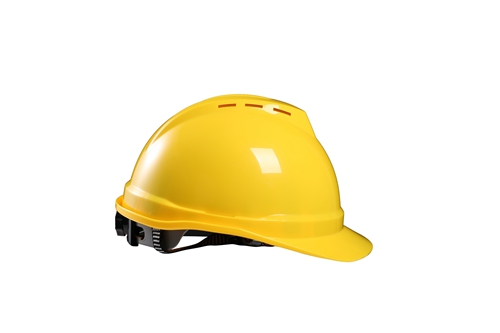
Application Case Studies
Case Study 1: Major Canadian Energy Company - FR/HV Workwear
A prominent energy company operating in Alberta faced challenges with their female field technicians complaining about ill-fitting, bulky FR (Flame-Resistant) and HV (High-Visibility) clothing. Standard unisex options often meant baggy sleeves, long pant legs, and poor torso fit, compromising both safety and comfort. This concern was specifically affecting the morale and efficiency of their growing female workforce, and the company took WW concern for safety clothing seriously.
Solution: They partnered with a specialized manufacturer of women's safety clothing canada to implement a custom program. This included a range of FR coveralls and jackets designed with female-specific cuts, adjustable waistbands, and shorter inseams. The garments utilized a lightweight, breathable, yet highly protective 7 oz/yd² FR cotton/nylon blend, meeting CSA Z96 Class 2 Level 2 and NFPA 2112 standards.
Outcome: Within six months, the company reported a significant increase in employee satisfaction (over 90% positive feedback from female staff) and a measurable decrease in minor incidents related to restricted movement or snagging. Productivity also saw a modest but notable rise, attributed to enhanced comfort and focus. The company extended the program to all new female hires and became a strong advocate for gender-specific PPE.
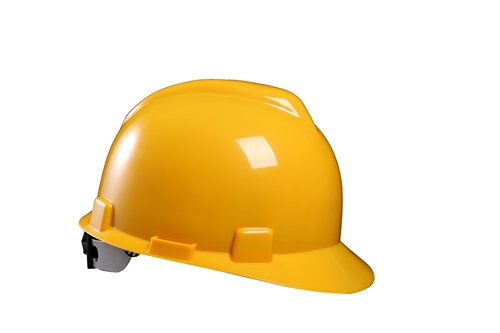
Case Study 2: Municipal Water & Wastewater Department - All-Weather Protection
A municipal department in Ontario required durable, waterproof, and high-visibility outerwear for its predominantly outdoor female workforce engaged in water infrastructure maintenance. Existing gear was either too heavy, too large, or failed to provide adequate protection in harsh Canadian winters and rainy seasons, leading to discomfort and potential health risks. This was a classic need for robust WW safety clothing.
Solution: The department invested in a line of women's safety clothing canada featuring lightweight, breathable, three-layer Gore-Tex® jackets and pants. These garments were designed with articulated sleeves and knees for maximum mobility, adjustable hoods compatible with hard hats, and strategically placed reflective taping to meet CSA Z96 Class 2 Level 2 requirements. The internal lining was optimized for moisture-wicking and thermal regulation.
Outcome: Field workers reported significantly improved comfort and dryness in all weather conditions. The enhanced fit allowed for better layering without restricting movement, crucial for tasks involving heavy lifting and manual labor. The department noted a reduction in sick days related to cold exposure and an overall boost in team morale, reinforcing the value of purpose-built womens safety clothing.
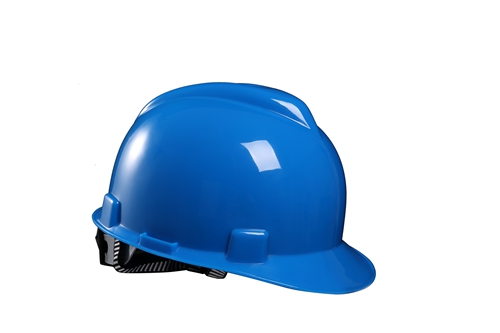
Frequently Asked Questions (FAQ) about Women's Safety Clothing in Canada
Q1: Why is gender-specific safety clothing necessary?
A1: Gender-specific safety clothing is crucial because men and women have different average body shapes and proportions. Unisex PPE often results in ill-fitting garments for women, leading to reduced mobility, discomfort, and a compromised level of protection. For instance, baggy clothing can snag on machinery, and improperly placed reflective strips can reduce visibility, directly impacting safety on the job. This directly relates to the effective deployment of women's safety clothing canada.
Q2: What Canadian standards apply to women's safety clothing?
A2: All safety clothing in Canada, including that designed for women, must comply with relevant CSA Group (Canadian Standards Association) standards. Key standards include CSA Z96-15 for High-Visibility Safety Apparel, CSA Z462 for Workplace Electrical Safety, and others depending on the specific hazard (e.g., thermal, chemical). Products should also adhere to international standards like ISO and ASTM where applicable.
Q3: How do I ensure proper sizing for my female employees?
A3: Reputable suppliers of women's safety clothing canada offer detailed sizing charts specifically developed for female body types. It is recommended to take accurate measurements of bust, waist, hips, inseam, and arm length. Some vendors may offer trial garments or even on-site fitting services for large orders to ensure optimal fit across the workforce.
Q4: Are there specific care instructions for technical safety clothing?
A4: Yes, technical safety clothing, especially items with FR properties or special coatings, requires specific care to maintain its protective features and extend its service life. Always follow the manufacturer's care label strictly, which typically includes guidelines on washing temperature, detergent type, drying methods, and avoiding bleach or fabric softeners. Improper care can degrade material performance.
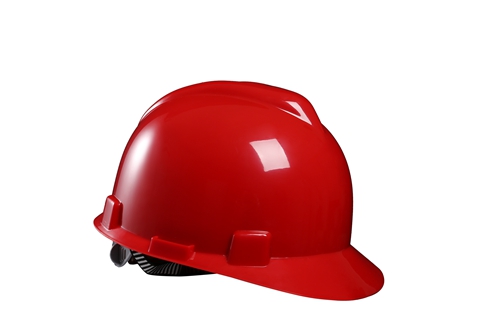
Lead Time, Warranty, and Customer Support
Reliable logistics and robust post-purchase support are critical considerations for industrial procurement of women's safety clothing canada.
Lead Time & Fulfillment:
- Standard Orders: For in-stock standard sizes and designs, lead times typically range from 1-3 weeks within Canada.
- Custom/Bulk Orders: Customized solutions or large volume orders usually require 4-12 weeks, depending on the complexity of design, material sourcing, and manufacturing capacity. This should be a key discussion point with workwear safety clothing factories.
- Expedited Shipping: Expedited options are generally available at an additional cost for urgent requirements.

Warranty Commitments:
- Manufacturer's Warranty: Most reputable manufacturers offer a warranty (typically 12-24 months) covering defects in materials and workmanship under normal use and proper care.
- Extended Warranties: For high-value specialized items or long-term partnerships, extended warranty options may be negotiable.
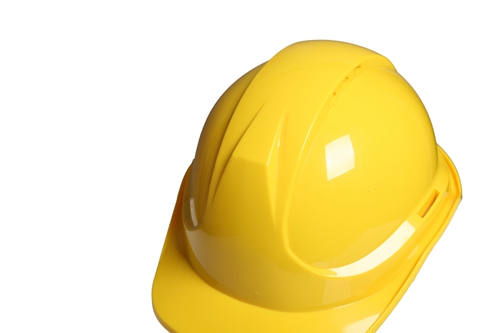
Customer Support:
- Dedicated Account Management: For B2B clients, dedicated account managers provide personalized service, from initial consultation to order fulfillment and post-sales support.
- Technical Assistance: Access to product specialists for guidance on material selection, compliance, and custom solutions.
- Returns & Exchanges: Clear and efficient processes for returns, exchanges, or warranty claims, ensuring minimal disruption to operations.

Conclusion
The evolution of women's safety clothing canada represents a significant step forward in workplace safety and gender equity. By prioritizing ergonomic design, advanced materials, and strict adherence to Canadian safety standards, manufacturers are providing solutions that not only protect but also empower female workers across diverse and demanding industries. Investing in gender-specific PPE is not merely a compliance measure but a strategic decision that enhances employee well-being, improves productivity, and fosters a more inclusive and safe work environment. As the industrial landscape continues to evolve, the demand for sophisticated and tailored safety solutions for women will only intensify, making it a critical area of focus for B2B procurement and safety management.
References
- CSA Group. (2015). CSA Z96-15, High-Visibility Safety Apparel. Canadian Standards Association.
- National Fire Protection Association. (2021). NFPA 2112: Standard on Flame-Resistant Garments for Protection of Industrial Personnel Against Flash Fire. NFPA.
- American Society for Testing and Materials. (2018). ASTM F1959/F1959M-18: Standard Test Method for Determining the Arc Rating of Materials for Arc Flash Protective Clothing. ASTM International.
- International Organization for Standardization. (2015). ISO 11612: Protective clothing – Clothing to protect against heat and flame – Minimum performance requirements. ISO.
- Occupational Safety and Health Administration (OSHA). (2019). Personal Protective Equipment. U.S. Department of Labor.
-
Safety Helmet for Toddler: Protecting Little Explorers Worldwide
NewsNov.25,2025
-
Essential Guide to Safety Helmets for the Oil and Gas Industry
NewsNov.24,2025
-
Essential Guide to Safety Helmet for Baby – Protect Little Explorers with Confidence
NewsNov.24,2025
-
Comprehensive Guide to Safety Helmet Factory – Global Insights & Innovations
NewsNov.23,2025
-
Rockman Safety Helmet: Ultimate Industrial Head Protection Guide
NewsNov.23,2025
-
Race Safety Helmet – Essential Protection for Motorsport Champions
NewsNov.22,2025
